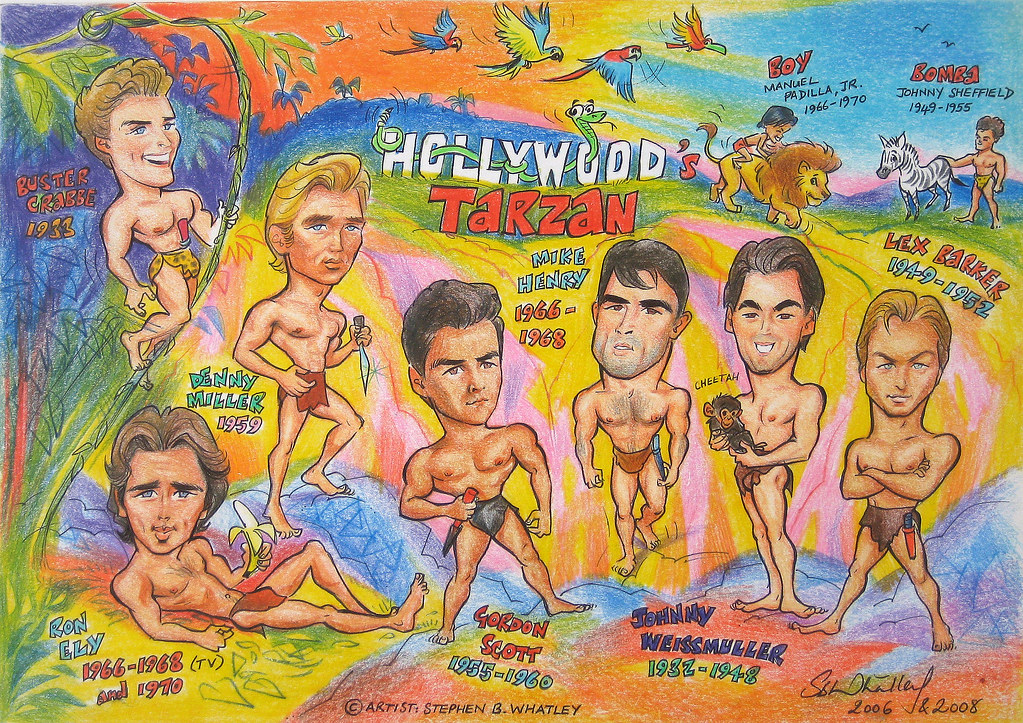
From today's Writer's Almanac:
On this day in 1912, the character of Tarzan, King of the Apes, came to life in All-Story Magazine. Tarzan's creator, Edgar Rice Burroughs, had failed the entrance exam to the U.S. Military Academy at West Point and fared poorly in other occupations like cowboy, shopkeeper, gold miner, and railroad policemen. It was after devouring a lot of pulp magazines that he tried his hand at writing, believing "if people were paid for writing rot such as I read in some of those magazines, that I could write stories just as rotten. As a matter of fact, although I had never written a story, I knew absolutely that I could write stories just as entertaining and probably a whole lot more so than any I chanced to read in those magazines."
He'd had success with his John Carter stories, which would later be novelized for the first time as The Princess of Mars (1912), but it was the creation of Tarzan, a white baby orphaned in the coastal jungles of Africa and raised by the she-ape Kala, that would make his legacy. Burroughs had considered naming his feral child "Zanter" or "Tublat Zan," but settled on "Tarzan," born John Clayton, son of Lord and Lady Greystoke of England. The name "Tarzan" means "white skin" in ape language. He teaches himself to read when he discovers picture books his parents left behind. And later, when an American gentleman and his daughter, Jane, arrive in the jungle looking for buried treasure, they find Tarzan, who falls instantly in love with Jane.
"Tarzan of the Apes: A Romance of the Jungle" was a hit. Two years later, in 1914, Burroughs' story of a tall, gray-eyed, athletic man who can swing from vines, kill an ape, fill out a loincloth, and wield a knife with expert precision was published as the novel Tarzan of the Apes and became an instant sensation, spawning 24 more Tarzan novels and more than 40 films. The first Tarzan movie was made in 1917 and grossed over a million dollars. Burroughs was a consummate businessman, controlling the rights and licensing to all things Tarzan-related, like television shows, comic books, radio shows, jackknives, and even multivitamins.
The Tarzan novels had a profound impact on pop culture and science. Anthropologist and primatologist Jane Goodall, renowned for her work with chimpanzees, began reading the books when she was 11 and credits them with inspiring her determination to work in Africa. She said: "I fell passionately in love with Tarzan — this glorious creature living out in the jungle doing all the things I wanted to do, and what did he do? He married the wrong Jane."
Science fiction writer Ray Bradbury spent his childhood memorizing passages from the Tarzan novels and reciting them to his friends. He said, "Burroughs is probably the most influential writer in the history of the world."
In the novels, Tarzan is well-spoken and thoughtful. Burroughs didn't care for the film versions, which made Tarzan out to be a rough-hewn semiliterate, reciting lines like, "Me, Tarzan, you, Jane," which he never says in the books.
In the course of 24 Tarzan novels written by Edgar Rice Burroughs, Tarzan finds remnants of the Roman Empire hidden in the mountains of Africa; prevents Russian communists from looting the lost city of Opar; stumbles upon a real-life Jurassic Park filled with angry dinosaurs; travels to Baltimore, Maryland, to win Jane's hand in marriage; and runs afoul of the Veltopismakusian scientist Zoanthrohago, who reduces him to one-fourth of his normal size.
Edgar Rice Burroughs made so much money from the character of Tarzan that he formed his own publishing house and bought 550-acres of land east of Los Angeles and called it "Tarzana Ranch." Today, it is known as the city of Tarzana.
No comments:
Post a Comment
We enjoy hearing from visitors! Please leave your questions, thoughts, wish lists, or whatever else is on your mind.